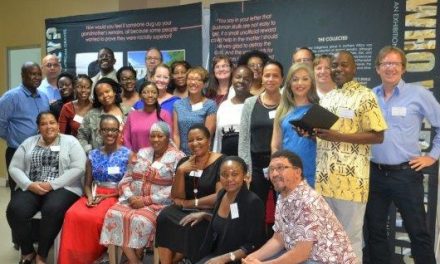
Polytechnic name change more complex
The implications of the Polytechnic of Namibia’s name change to the University of Science and Technology are much more deeper and more complex than simply the awarding of certificates and degrees as fundamental changes relating to the nature of the business of the institution, its size and shape are expected to take place.
“What does this change from the Polytechnic to a university of science and technology mean for us? For many of you students who in the near future will be graduating from the institution, one of the most visible changes will be that your degrees or certificates will no longer be awarded by the Polytechnic, but by the University of Science and Technology.”
“ However, the implications of the name change are much deeper and more complex than simply the awarding of certificates and degrees.” said Professor Tjama Tjivikua, Poly Rector in a speech delivered on his behalf by Dr. Andrew Niikondo, Vice-Rector: Research and Academic Affairs at the official opening of the 2013 academic year on Wednesday.
The theme for this year is building sustainable futures.
According to Tjivikua, the implications will have profound consequences on the core business of the institution from teaching and learning, research and innovation to service rendered.
“These will include looking at types and levels of programmes and qualifications we offer; the physical infrastructure that exists, quality of and support provided to teaching and learning and research and innovation; and multi- and inter-disciplinary initiatives, to name a few,” he said.
He indicated that every five years the Polytechnic produces a strategic plan that serves to guide the agenda of the institution during the said period. Coincidentally, the span of the current strategic plan runs its course at the end of the year and hence it is necessary that a new plan is developed.
“A major planning process has already been initiated and given new development of name change it brings a new twist to the planning process and hence the plan has been named ‘the strategic and transformation plan’ of the institution. All constituencies of the institution, students included, are encouraged to participate and make inputs to this process which will shape the future institution we all would like to see. There is thus no doubt that 2013 will be a busy year for all of us,” he added.
He said, everyone also be mindful of some of the unintended consequences of such an intense transformation process as experience has taught us that once the transformation agenda occupies the central space in the institution, then the institution tends to take its eyes off other activities.
“One of the critical activities that easily gets relegated to a secondary role is the teaching and learning and as a result the quality thereof is adversely affected. We will have to keep our guards up and ensure that we have no slip ups, particularly in those areas where we provide students a service. It is clear to me that this year all of us will need to operate a gear higher than ever before,” he said.
He further informed the students that over the years the Polytechnic has been preparing itself for and undergoing transition, that is: considerable investment has gone into developing a sound basis for infrastructural and technological development; efficient and effective systems for the acquisition, development and application of knowledge have been established; and proactively strong mutually beneficial relationships that have supported the teaching and learning, research and innovation and social development were established with industry stakeholders.
“In the meantime, the institution also continued to steadily invest resources in staff development so as to ensure that faculty and staff could upgrade their qualifications and up-skill. These experiences will prove worthwhile as we begin to implement ‘the strategic and transformation plan,” he said.
Approximately 3500 first-year students have been registered at The Polytechnic of Namibia for the 2013 academic year.












































